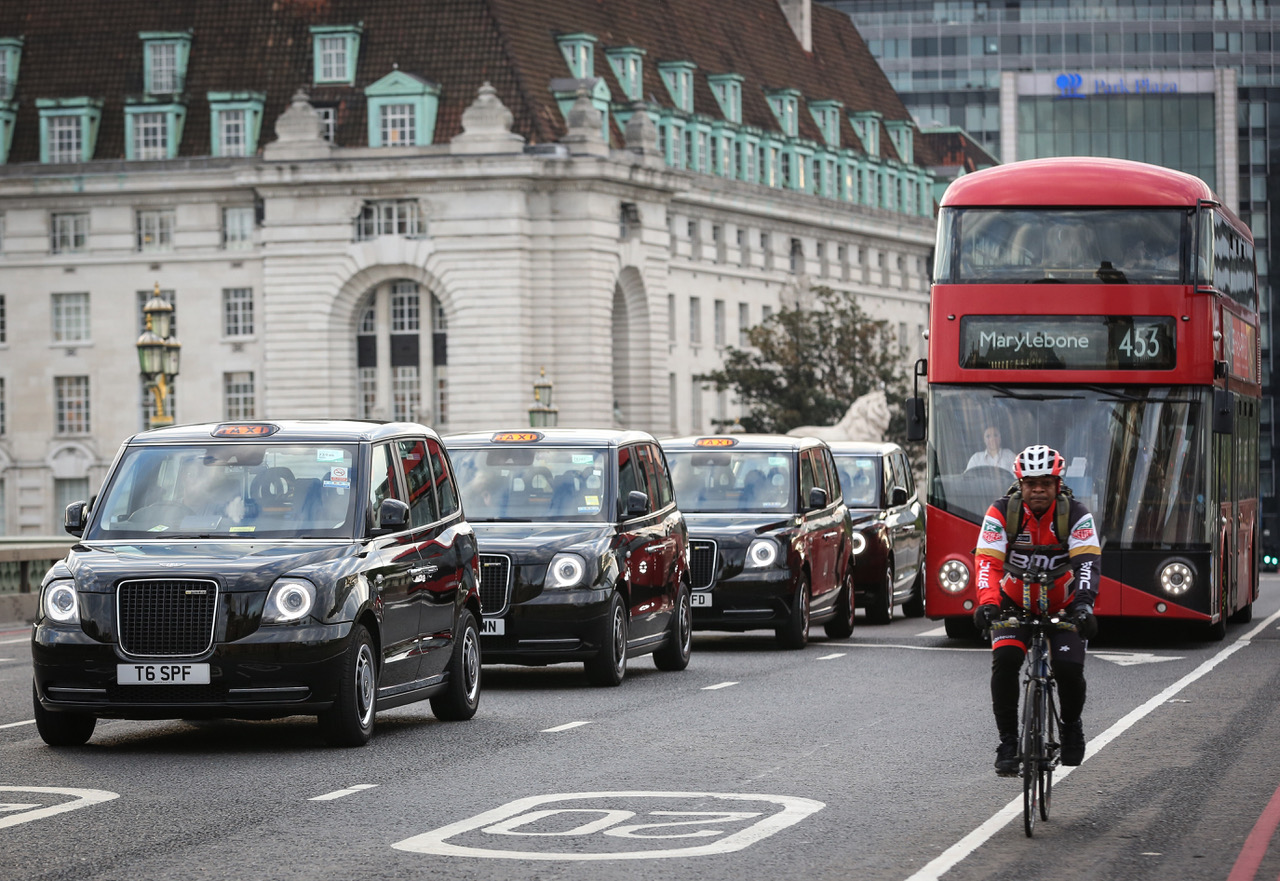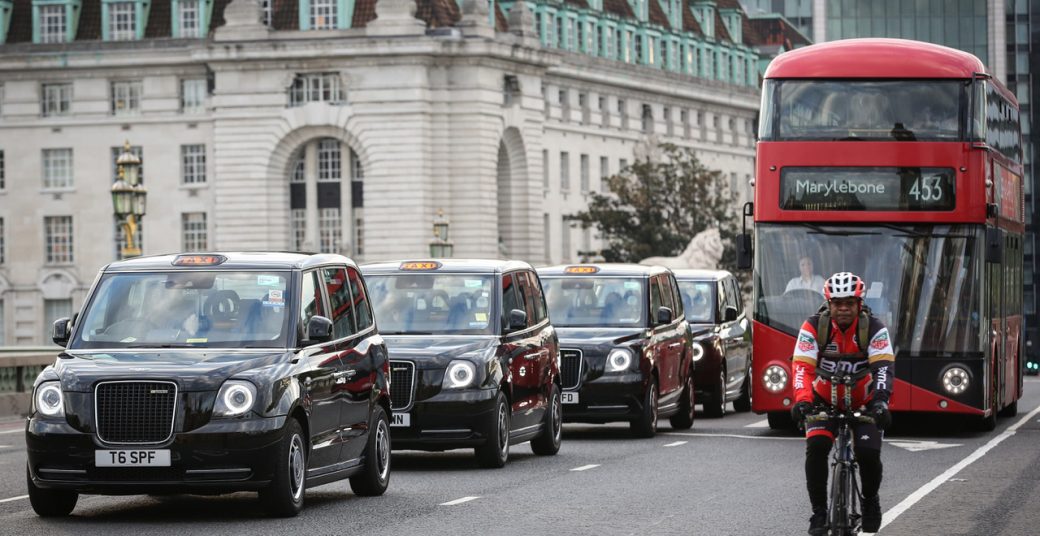Zero Emission PR: Vehicle choice could significantly reduce drivers’ air pollution exposure
Zero Emission PR
Could switching to zero emission capable taxis potentially halve exposure to toxic exhaust pollutants? Findings from new research finds London taxi drivers experience twice as much exposure to air pollution at the wheel compared to outside of work. However, their choice of vehicle can make a very significant difference.
King’s College London’s Environmental Research Group (ERG)
Studying air pollution, King’s College London’s Environmental Research Group (ERG) monitored drivers of both diesel and electric taxis. Measuring particulate matter and nitrogen dioxide inside and outside of their working environments. Findings show that drivers of diesel taxis are exposed to pollution levels 1.8 times higher than those driving an electric model.
LEVC
Part-funded by LEVC, manufacturer of the iconic black cab. This study forms a portion of the wider DEMiSt research project funded by the Institution of Occupational Safety and Health (IOSH). Aiming to understand the determinants of urban pollution exposure to professional drivers for a range of occupations, vehicle types and driving conditions.
Also seeking to understand whether there are certain behaviours professional drivers can adopt to minimise their exposure to air pollution.
Taxi drivers, like all people working on urban roads for a living, risk exposure to high levels of air pollution. With urban air pollution linked to asthma, reduced lung function and even cancer. From this, LEVC and IOSH commissioned King’s College London to carry out a detailed study. Determining taxi drivers’ exposure under real-world city driving conditions. Gathering measurements in LEVC’s TX electric taxi and the previous generation TX4 diesel taxi.

The Process:
Recruiting ten London taxi drivers and providing a portable black carbon monitor to each cabbie, which is a proxy for diesel exhaust exposure, with an inbuilt GPS unit. Supplemented by NO2 monitoring equipment. TX models representing 5 of the vehicles, with the other half being TX4 diesels. The small sample size reflects the labour intensity required to undertake such research. Whilst representing a typical personal exposure studies. Despite this, over 390 hours of taxi drivers’ air pollution data was analysed.
In-vehicle concentrations were measured over a period of four full working days during summer 2018. Initial analysis found that while cab drivers face the same level of exposure to poor air quality as other commercial vehicle drivers, and experience double the exposure at work compared to outside of work, their choice of vehicle made a very significant difference.
Average exposure to nitrogen dioxide and black carbon during a standard shift was 1.8 times higher for drivers of the older diesel taxi compared to the all-new TX electric cab.
*Black carbon: a component of fine particulate matter – PM2.5 – which results from incomplete combustion of fossil fuel.
King’s College London hypothesise that the reduction in exposure for drivers in the TX electric cab isn’t down to the fuel type alone. But also due to the TX’s improved air tightness and ventilation system over the older model. Thus, reducing infiltration into the cab. Like many premium modern vehicles, the TX has a multi-filter system that works to remove gases and particles from the incoming air.
However, simple driver behaviours can also play a significant role in cutting air pollution exposure.
Lead researcher Dr Benjamin Barratt of King’s College London said:
“Lowest polluntant exposures were observed – particularly in the case of the TX – when the vehicle’s ventilation settings were set to recirculate. Additionall,y with the vehicle’s windows closed. This combination reduces exposure by up to 67%. Therefore, suggesting that these changes could mitigate pollutant exposures for these drivers.
“For the older vehicle, we believe that the vehicle’s cabin is not as air tight. Therefore allowing outside traffic emissions to infiltrate the cabin. Even when windows are up,”
Duncan Spencer, Head of Advice and Practice at IOSH, said:
“One priority area of activity for IOSH is working to prevent occupational cancer. As well as, very fine particulate matter in diesel engine exhaust emissions that can be carcinogenic. This research focusing on taxi drivers forms part of our two-year DEMiSt ‘Diesel Exposure Mitigation Study’.
“Although we’re generally becoming more aware of air quality and its impact on health, less well-known is the effect on professional drivers. These spend more working hours on the road. Plus, the extent they are exposed to potentially harmful environments. This group often work within very congested urban environments and are often overlooked.”
Steve McNamara, General Secretary of the Licensed Taxi Drivers’ Association, said:
“London’s taxi drivers know all too well how crucial it is we tackle air pollution. One of the worst places to breathe in the city’s dirty air is in traffic, driving a cab.
LEVC’s new electric taxi is a game-changer for us and we’re proud to be leading the charge towards a cleaner, greener London. The new taxi is not only helping us cut emissions; it is helping protect cabbies against the health risks of pollution.
Taxi drivers are keen to switch to the cleaner cab. Nearly 600 already have. However, there’s more TfL and the Mayor can do to help. We need a realistic decommissioning scheme. While TfL must work with the boroughs to install more rapid charging points for taxis. Drivers need to feel confident when buying the taxi that they can charge it wherever they are in London, and get back to work as quickly as possible.”
Research:
This experiment forms part of a large-scale, two-year study by the Environmental Research Group at King’s College London funded by IOSH. Aiming to understand the risk of harm to professional drivers. Especially, from exposure to diesel exhaust emissions. Whereby practical risk reduction strategies are inclusive.
The researchers are currently recruiting. 200 professional drivers of taxis, vans and trucks from across a range of sectors are part of this research.
Advice on how professional drivers can minimise their exposure to air pollution will arrive upon completion of the full IOSH study in 2019.
Influence Associates
Influence Associates are world leaders in Automotive PR, Zero Emission PR, Motorsport PR and Classic Car PR. As well as brand strategy and building, PR and communications.
